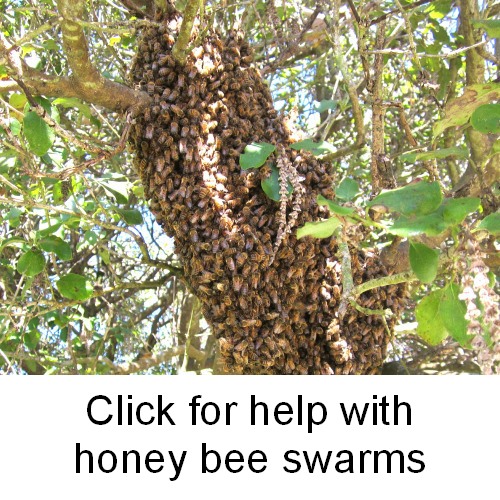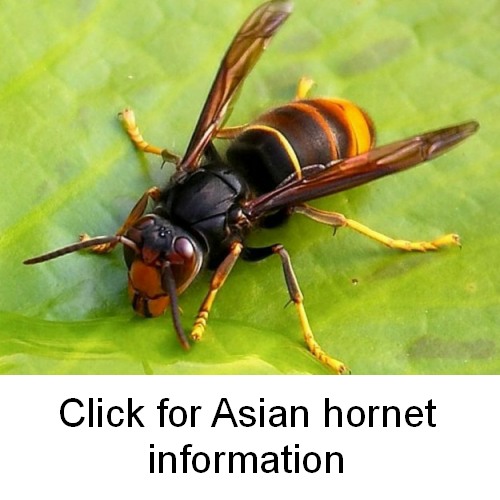
Sub-pages: │ Welcome │ Reports │ Contacts │ Links │ Asian hornet │
Click HERE for Honiton Show 2024 information!
Notice Board
Starvation warning!
Continued cold weather could put your bees at risk of starvation. Check stores now and feed with 2:1 syrup if necessary.
Latest update
Varroa update 2024
I-Spy session 2024
Improvers day 25/5/24
Swarm Control 27/4/24
Cut-outs and queen marking
Island Beekeeping Mar ’24
Quick click to visit:
Contacts – Maps – Buzzmail – Next meeting – Facebook
Bees for Development – July BeeMail
Reports
Varroa update 2024
I-Spy session 2024
Improvers day 25/5/24
Swarm Control 27/4/24
Cut-outs and queen marking
Island Beekeeping Mar ’24
Keep Calm, Feb ’24
Winter Social-Tips and Tricks
AGM Nov ’23
Bee Microbiome 10/23
Winter Preparation, Sept ’23
Honey Processing, Aug ’23
Bee Myths, April ’23
Queenright queen rearing, Feb ’23
Asian hornet threat, Jan ’23
December Social 2022
Forage 13/11/2022
Queen rearing 26/06/22
Mighty moths are better pollinators than busy bees!
Research shows that while moths pollinate during the night, they are more efficient pollinators than bees are during the day. Read the report. See what you think.
From Orkney to the Isles of Scilly – the challenges and quirks of island beekeeping at the geographical extremes of the UK, even when varroa isn’t present.
A talk by Stephen Fleming, joint editor Bee Craft magazine, held at Kilmington Village Hall, 7/3/24. 35 attendees.
Stephen has been involved in some research work aiming to find out whether the bees on small island habitats are black bees (Apis mellifera mellifera), and whether inbreeding in these small communities is a problem. This work may also answer the question ’where did they come from’?
The Isles of Scilly are a natural laboratory as they are a group of islands about 11km by 11km in area, and 40km west of Land’s End. Thus, no bees are going to invade naturally.
The Orkney Islands, on the other hand, are a larger group of islands about 75km by 60km in area off the north coast of Scotland, 10km from John O’Groats. Again, it is unlikely that bees will fly that far over sea.
The weather conditions at these sites are diverse. Curiously, Orkney has more hours of sunlight than the Isles of Scilly, however they both have a maritime climate, although Orkney is generally cooler than Scilly. They both have persistent strong winds to cope with. Both island habitats have long lived queens, probably due to a lack of varroa-mediated diseases.
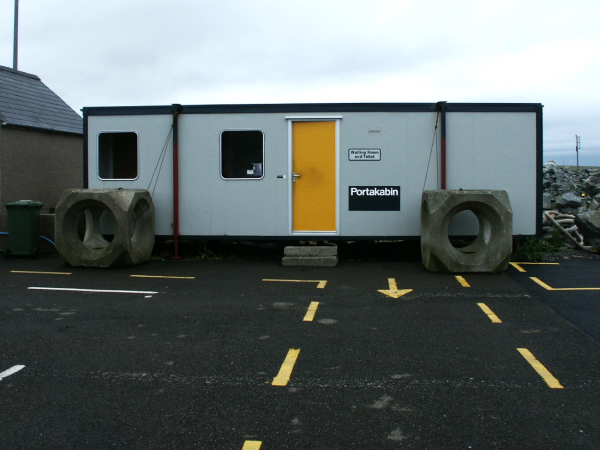
High winds expected on Orkney!
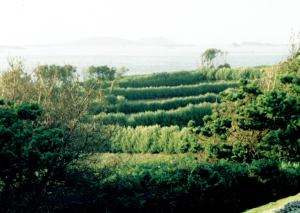
Wind break hedges on St Marys
The Isles of Scilly have 15 known apiaries, with 15 beekeepers spread over 5 islands (St Mary’s, St Agnes, Bryher, Tresco and St Martin’s).
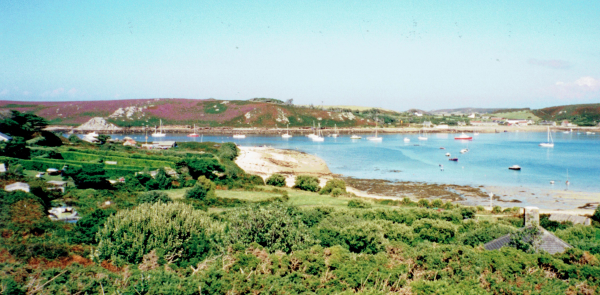
St Mary’s

Bryher
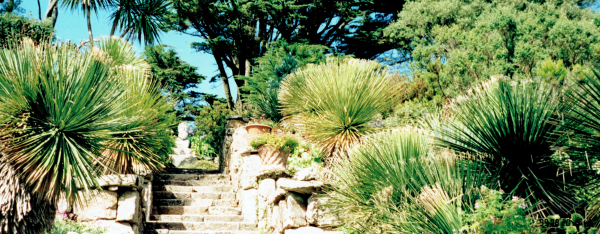
Tresco

St Martin’s
On Orkney, there are 21 known apiaries with 35 beekeepers spread over 5 islands (Mainland,
St Margarets, Rousay, Shapinsay and Sanday).
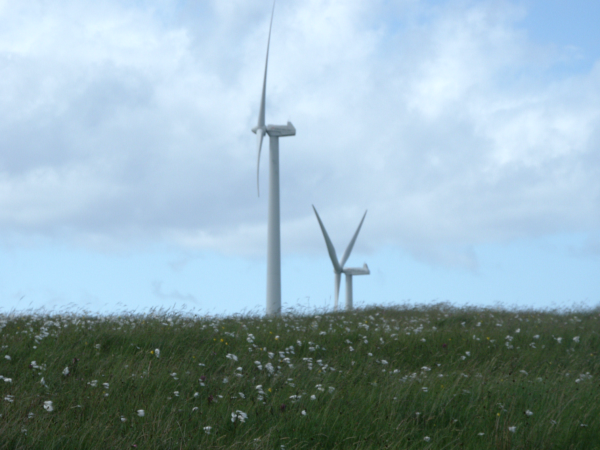
Orkney landscape
The Scillonian Bee Project
This aims to answer four questions:
- Does Scilly have native bees?
- Is inbreeding a risk?
- Is Scilly varroa free?
- Can the Asian hornet be kept out?
Note that swarms can survive on Scilly and feral colonies are known to exist.
Orkney by comparison:
- Known that dark bees are dominant.
- Can Orkney be kept varroa free?
- Currently no fear of the Asian hornet.
Note that swarms do not survive over winter on Orkney.
The History of bees on Scilly
A monastic settlement was established on the island of Tresco in 946, so it is possible that honey bees were introduced then, but by 1351 the monks had fled due to piracy. Bees are certainly around the old Abbey grounds today in the world-famous Tresco Abbey Gardens with its 20,000 subtropical plants from all over the world. Their origins are uncertain but over recent decades several different imports of queens and/or packaged bees are known to have occurred. With small numbers of colonies in Scilly, inbreeding is a potential problem. Experts believe 12 colonies might be the minimum number to avoid inbreeding becoming a problem.
Forage on Scilly
The islands would probably be naturally treeless, with areas of ling and bell heather, ideal for late-summer forage. Today, the plantings of Pittosporum, Griselinia and Escalonia hedging, protecting crops from the relentless winds, have transformed forage on St Mary’s. Managed, flower-rich grasslands on Bryher produce useful forage but on other islands there is a dearth outside early spring and summer. The most abundant late-summer forage at Tresco Abbey gardens are brambles, bell heather and Lily of the Valley tree (Clethra arborea, originally from Medeira). Echiums also abound.
Forage on Orkney
Basically, the climate is too cool to get much of a crop from the heather growth, but clover grows extensively, along with bog strawberry (Potentilla palustris) and meadowsweet. Wild flowers flourish in sheltered places (see images).
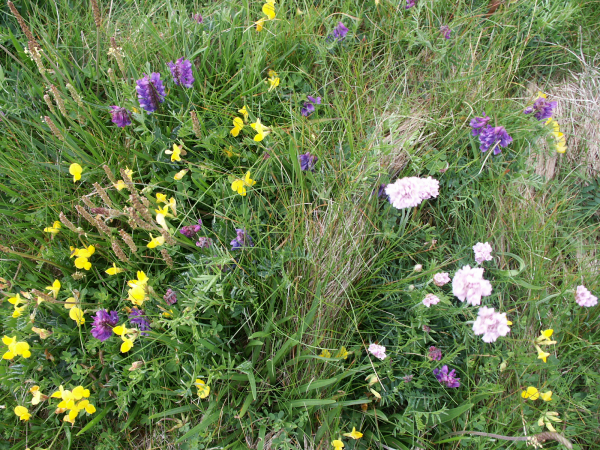
Orkney wild flowers
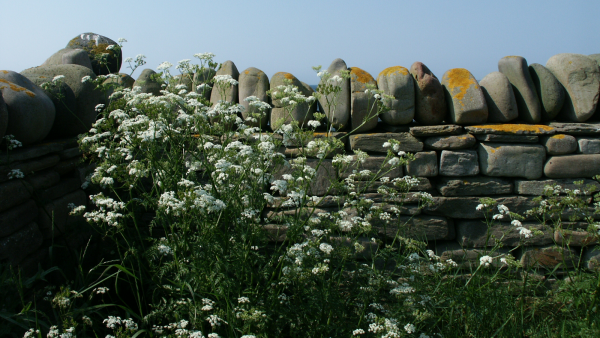
Orkney wild flowers
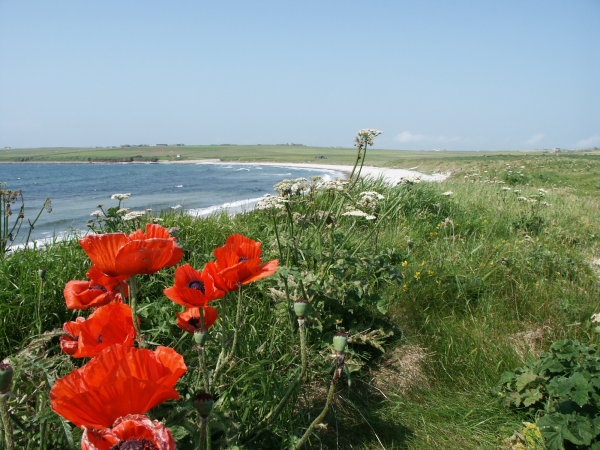
Poppies on the sea shore
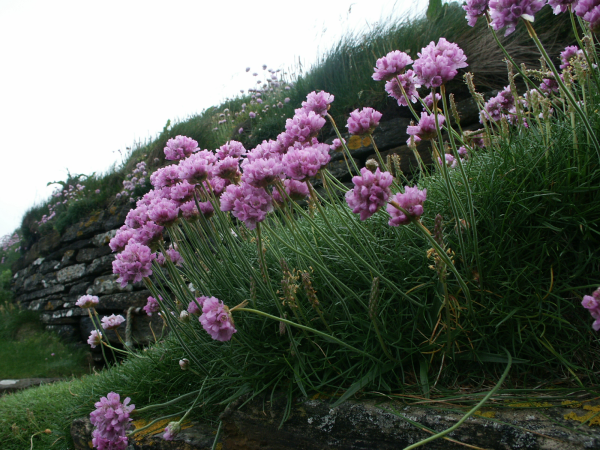
Thrift
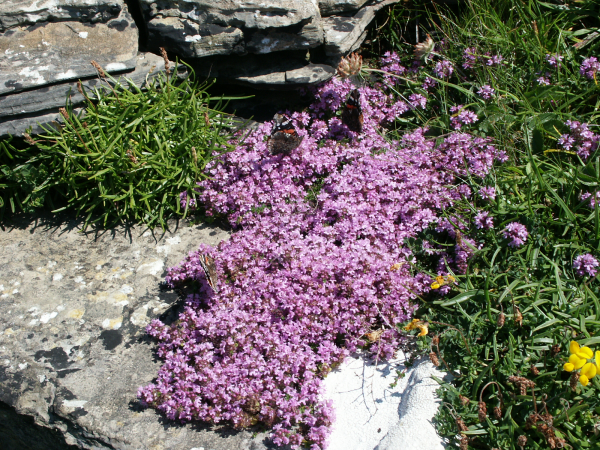
Wild thyme
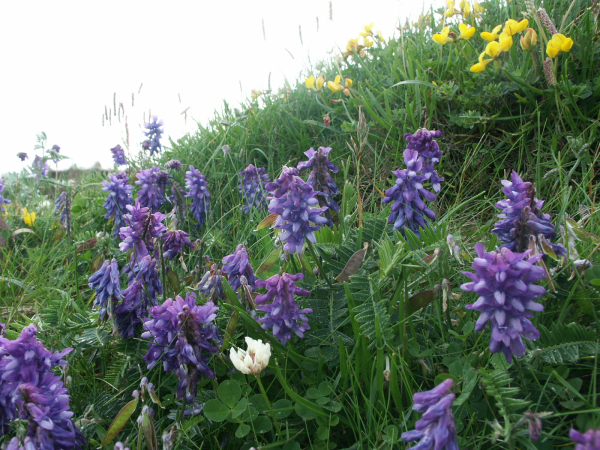
Vetch
In May 2021, beekeeper Jilly Halliday arrived on Tresco and teamed up with Nick Bentham-Jones of BIBBA to sample drone larvae for genetic analysis as part of the Scillonian Bee Project. The samples were analysed by Beebytes, a social enterprise specialising in honey bee genetics and DNA analysis. The results varied greatly from island to island. For example, St Agnes drones were 83% carniolan/Italian while Tresco drones were 89% mellifera strain. These preliminary results imply shared genetic ancestry between drones sampled from Bryher and Tresco. This could be via similar imports, human mediated movement or, intriguingly, via ‘island hopping’ of drones, queens or swarms.
The island barrier
Apart from the obvious natural barrier to invasion by alien species, such as varroa mites, there are other aspects to island beekeeping.
- Both archipelagos seem to be free of EFB and AFB.
- Currently, there are no reports of Nosema.
- Wax moth has only recently been a problem on Scilly.
- Conversely, chalk brood is a significant problem on Orkney, possibly due to adverse climate or dearth of early pollen.
- Braula coeca, a wingless fly that lives harmlessly on adult bees, used to be a common sight of honey bees in the UK before varroa treatments but is now rarely seen. However, it still thrives in varroa free environments such as the Isles of Scilly and Orkney.
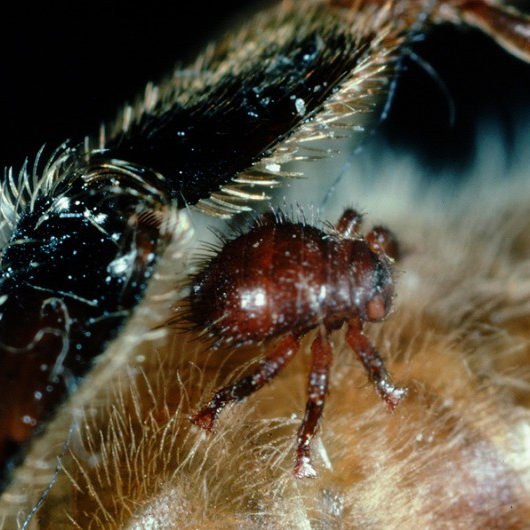
Braula (© Crown copyright)
Honey bee mating on Scilly and Orkney. The Game of Drones.
The Game of Drones is part of the Scillonian Bee Project working with local beekeepers to develop a sustainable population of honey bees in harmony with other pollinators and the environment on the Isles of Scilly.
A pheromone lure on the end of a 4m fishing rod will attract drones at drone congregation areas (DCA). By marking drones in apiaries on one island then catching drones at DCAs on the adjacent islands should indicate if and how far drones will fly over water. The alternative is to capture and mark drones at DCAs and record sightings of marked drones in surrounding apiaries. These experiments are documented in Bee Craft as part of the Scillonian Bee Project.
Stephen ended his talk with a reminder of an offer of 20% off a year’s subscription for groups with 10+ subscribers. Email subscriptions@bee-craft.com for details.
Both archipelagos have been inhabited for thousands of years.
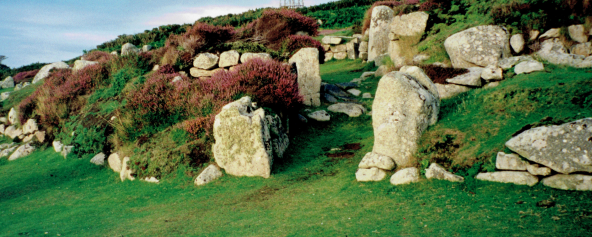
Ancient village, Isles of Scilly
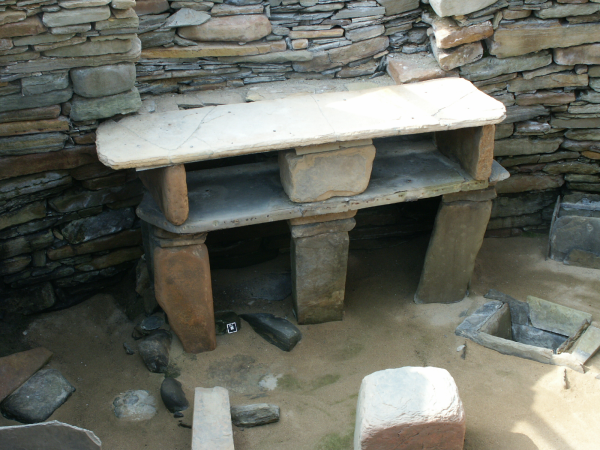
Scara Brae, Orkney
For gardeners. Some windbreak hedges on the Isles of Scilly.
Pittosporum angustifolium. Weeping Pittosporum.
Evergreen, hardy, salt resistant, drought and wind tolerant, Australian origin.
Pittosporum crassifolium
Leathery leaves withstands high winds, salt tolerant, evergreen, 2-6m high, a bit invasive. New Zealand origin. Dark red to purplish bee friendly flowers in early summer.
Escallonia rubra macrantha, red escalonia.
Grows to 2m, salt tolerant, fast growing, dense evergreen growth. The extended flowering period makes this a good choice for bee forage.
Griselinia e.g. G. littoralis ‘Dixon’s Cream’
LETS SPARKLE
A Talk and Presentation at the December Social meeting 2022
Introduced by Val Bone, with Nick Silver and John Badley. 44 people attended the evening.

Introduction by Val Bone: Our Honey judge at Honiton Show said, ‘Show honey should sparkle’, hence the title. We aim to look at how you go that little bit further to produce honey for the Show table. Just as with livestock at the Show, the competitors spend time turning an everyday animal into a perfectly washed, groomed and polished specimen. It’s the same with honey. We have on show two perfectly good, wholesome jars of honey straight from stock, but how do you achieve that little extra to present it as ‘Show Honey’? Nick will now take you through those steps to produce the SPARKLE!
Nick. Processing Run Honey
The schematic below shows the steps necessary for processing run honey. Liquifying (if the honey is set), straining to remove debris, settling to remove bubbles and conditioning to produce the sparkle.
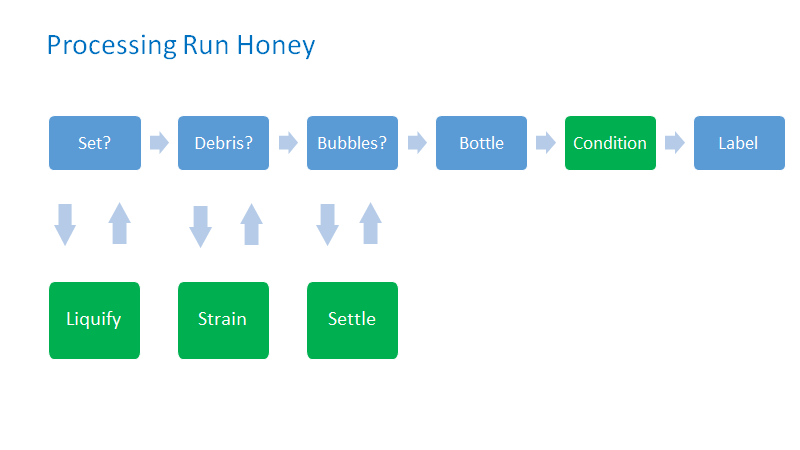
How much heating?
Honey subjected to heating will produce a breakdown substance called hydroxymethylfurfuraldehyde (HMF) which has a legal limit in honey of 40mg/kg honey. The graph below shows the relationship between Time and Temperature. Following the blue dashed lines, a temperature of 40°C for c9days will reach the 40mg limit, whereas a temperature of 50°C will only take 2-3 days to reach the same amount. At 60°C the safe limit is well under 1 day!
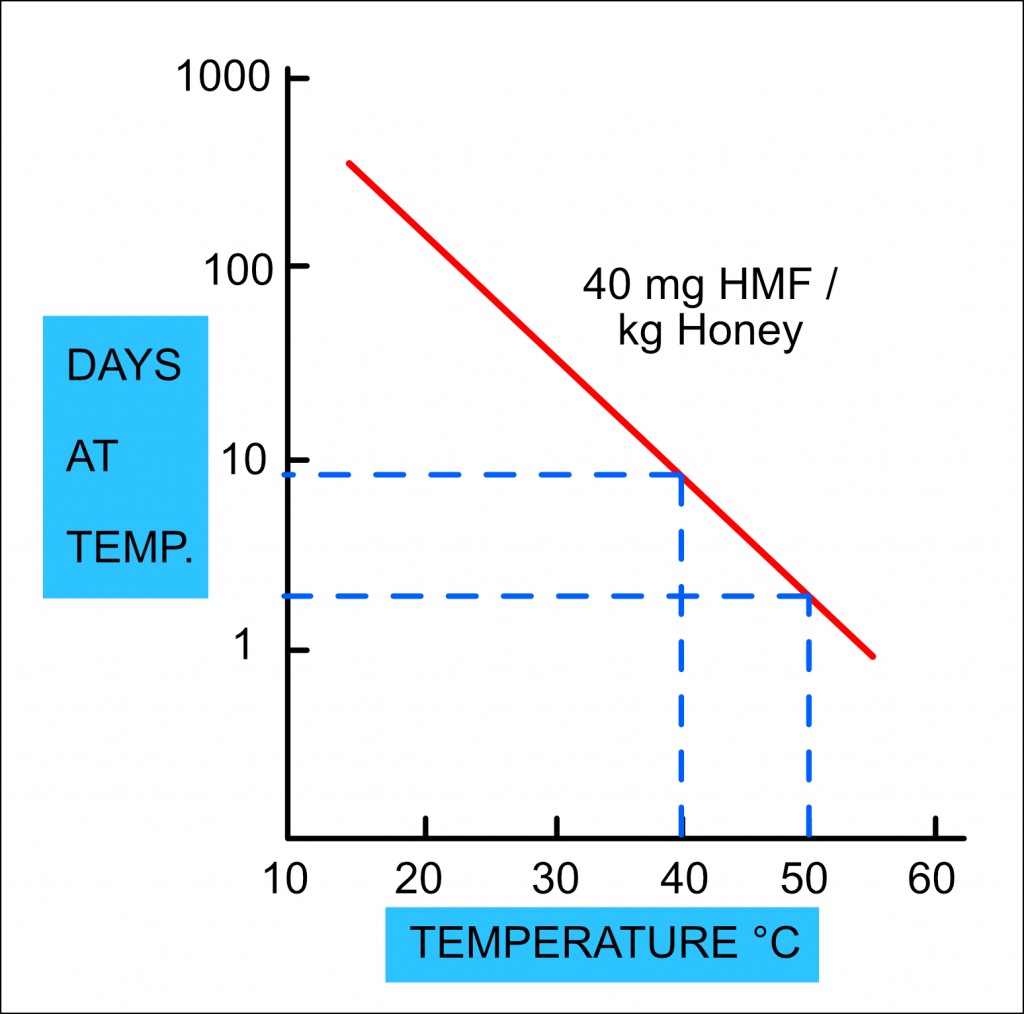
Liquify
This can be achieved by either heating in a warming cabinet (below left) or a bain marie (below right). Stirring occasionally will speed up the process. Hooper suggests 52°C for 2 days. Basterfield Honey Farm suggest ‘up to 50°C’
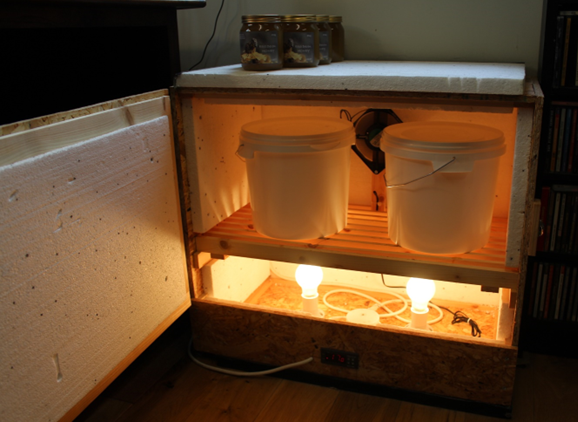
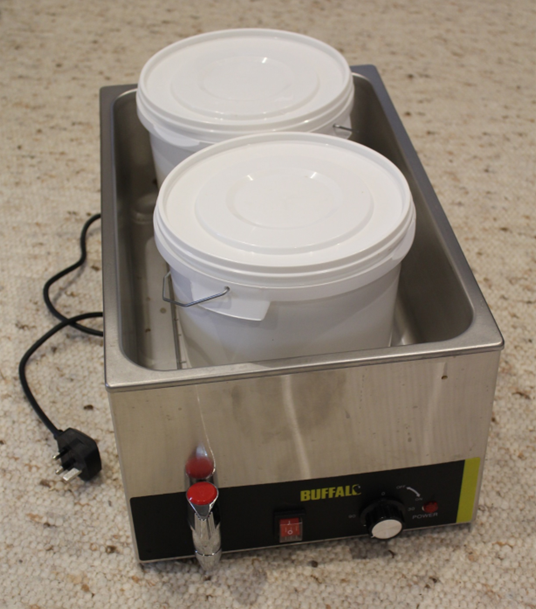
Strain
For the hobbyist beekeeper, straining immediately the honey is removed from the hive and spun from the frames is an easy option (below left). The honey is still warm so will flow through your straining system easily. Double stainless sieves recommended (coarse followed by fine) as they can be quickly washed and dried if blocking occurs.
Straining liquified honey can cause problems with sugar crystals blinding the mesh. The heated sieve (below right) is a useful piece of kit for speeding up the operation. The heated conical mesh is 350 micron, followed by a 200 micron straining cloth over the settling tank.
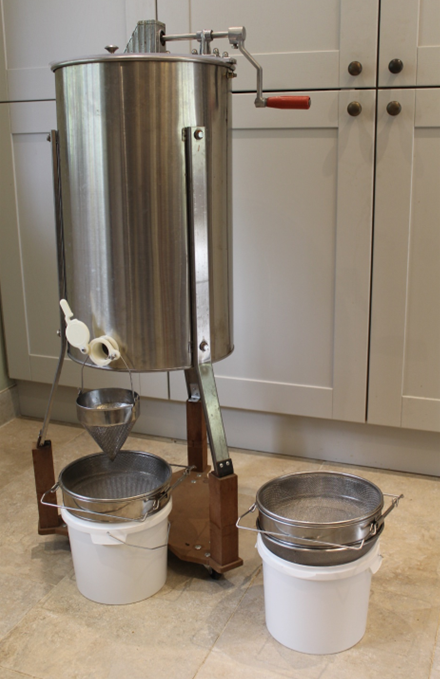
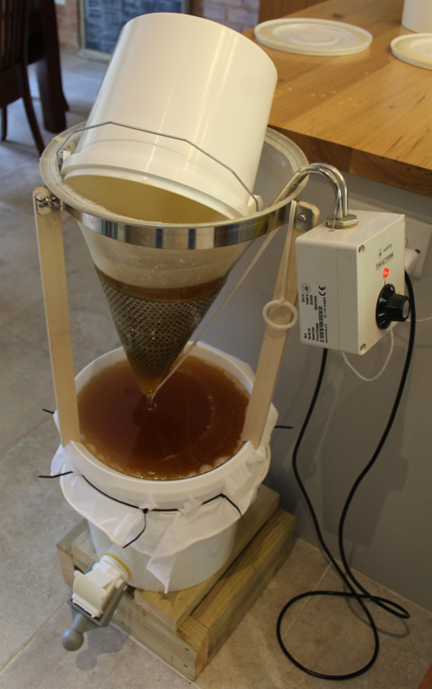
Settle
Settling allows any bubbles to rise to the top of the tank prior to bottling. Without settling your honey jars will look like the example on the left. Settling should produce sparkling honey shown on the right. Hooper suggests ’24 hours in a tall, narrow tank’.
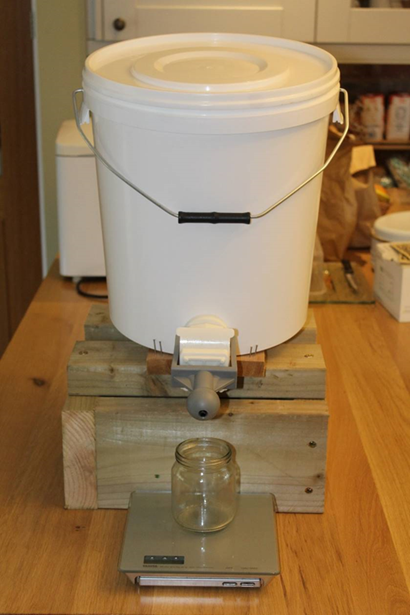
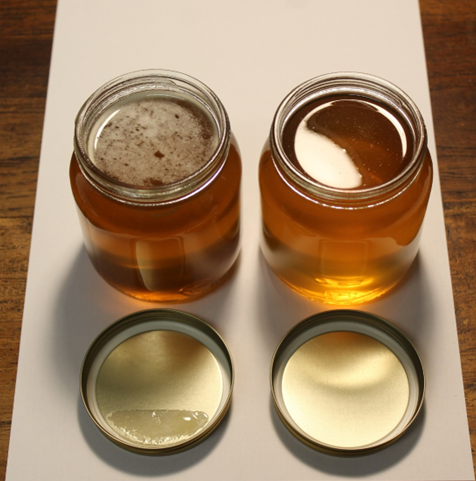
Condition
Conditioning removes all the remaining tiny crystals and will ensure clear sparkling run honey for 3-6 months. Hooper recommends 62°C for 1 hour. Basterfield Honey Farm recommend 62°C for 30 mins.
See images below. In either case, add the water to just below the lid. Jars should not sit directly on a hot metal container. Cool rapidly after heating.
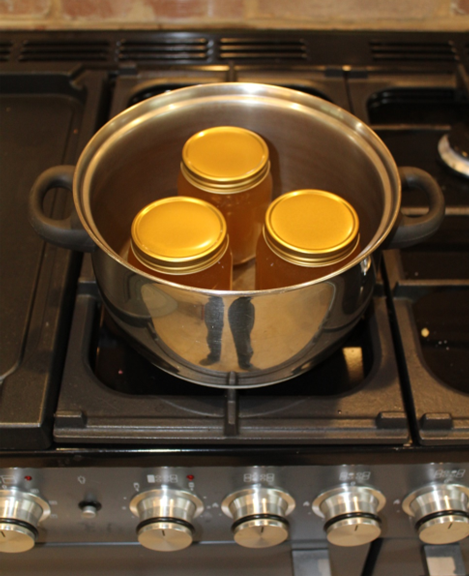
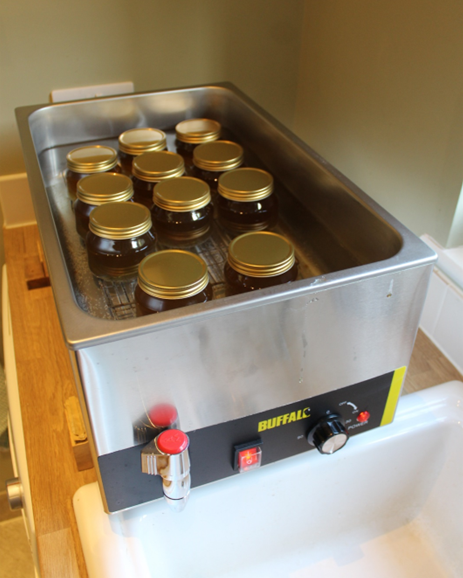
John. Hints and Tips for Award-winning Honey
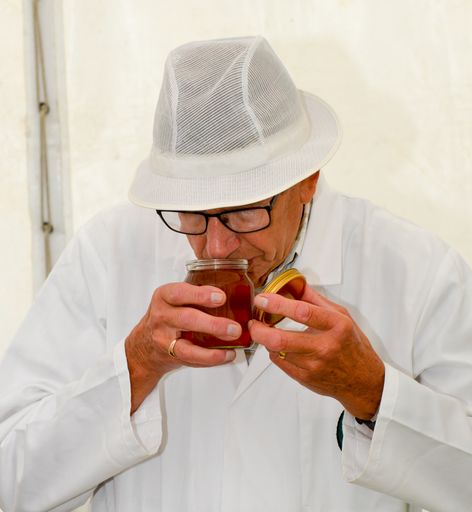
Meet our Honey Judge
Jack Mummery
BBKA Senior Judge
Checking head space aroma
What is the Judge looking for?
Read the Schedule !
- Class 1. Two matching 454g (1 lb) jars of Light English Honey.
- Class 2. Two matching 454g (1 lb) jars of Medium English Honey.
- Class 3. Two matching 454g (1 lb) jars of Dark English Honey.
- Class 8. Six matching transparent jars of English Honey, minimum jar size 345g (12 oz), labelled as for sale…
There are also Novice Classes for honey. A novice is anyone who has NOT won a prize at any Honey Show.
- Class 16. Two 454g (1 lb) jars Light English Honey.
- Class 17. Two 454g (1 lb) jars Medium or Dark English Honey.
- Class 18. Two 454g (1 lb) jars soft set English Honey.
- Class 19. Three 454g (1 lb) matching jars of English Honey.
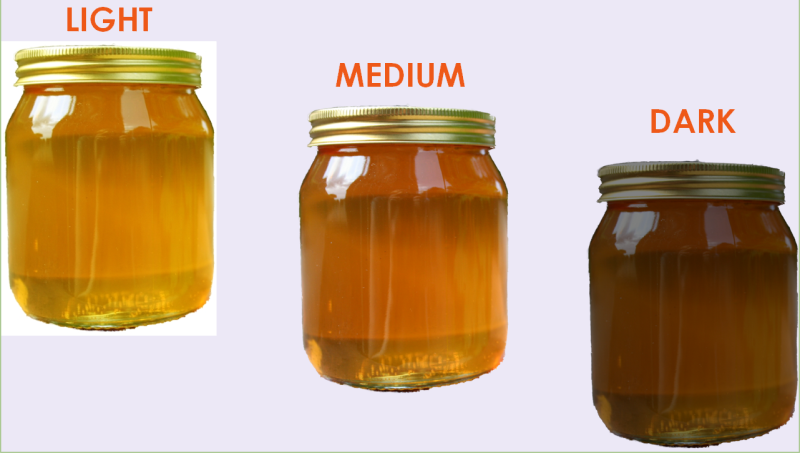
Honey should be:
- Free from bubbles, crystals or debris.
- All jars filled to the same level.
- Once filled, keep jars upright.
- Put lids on immediately to maximise head space aroma.
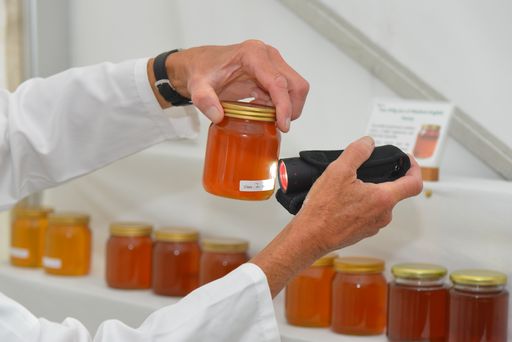
Do try this at home!
Checking for bubbles, crystals and debris.
Jars should be:
- Matching i.e., from the same batch.
- Must be spotlessly clean.
- Free of chips or damage.
- Polish the outside when on display.
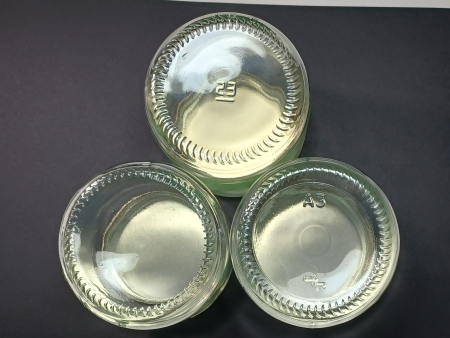
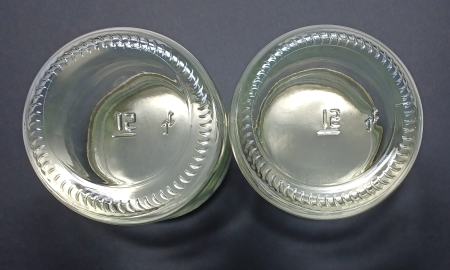
Lids should be:
- Matching i.e., from the same batch.
- Must be spotlessly clean.
- No rust or scratches.
- Polish the outside when on display.
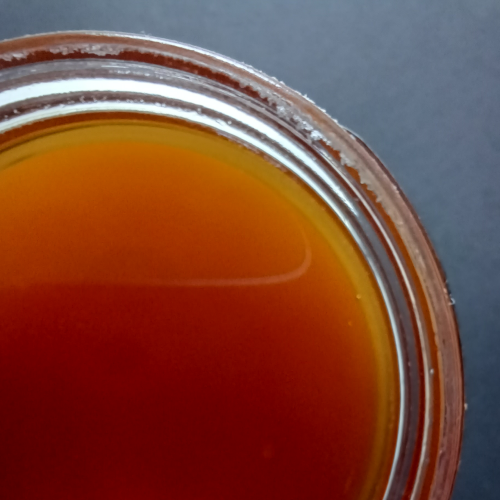
Lids must be spotlessly clean.
Some lids are manufactured with a powder on the polyurethane seal. This is what will happen if you do not wash your lids!!
The Joy of Winning!

We look forward to seeing your honey and other exhibits at the Honiton Show on August 3rd 2023!
Sub-pages: │ Welcome │ Reports │ Contacts │ Links │ Asian hornet │
© 2024 East Devon Beekeepers
Queen marking colour for 2024 – GREEN
The International queen marking colour code:
Years ending 1 or 6 are White , 2 or 7 are Yellow, 3 or 8 are Red, 4 or 9 are Green, 5 or 0 are Blue
Remember with the mnemonic Why You Rear Good Bees.
